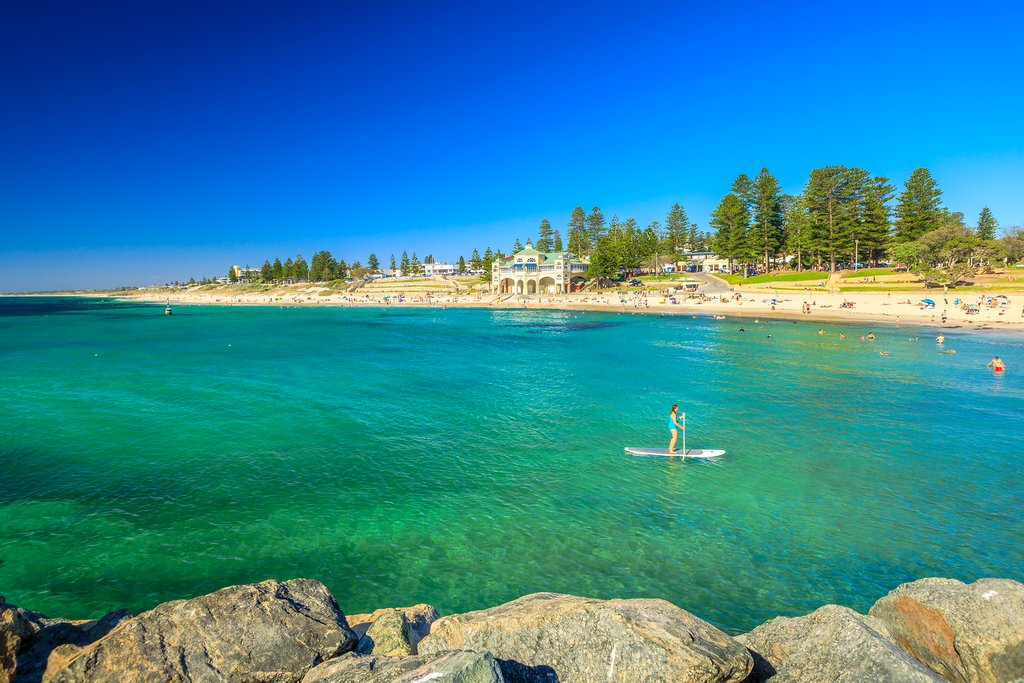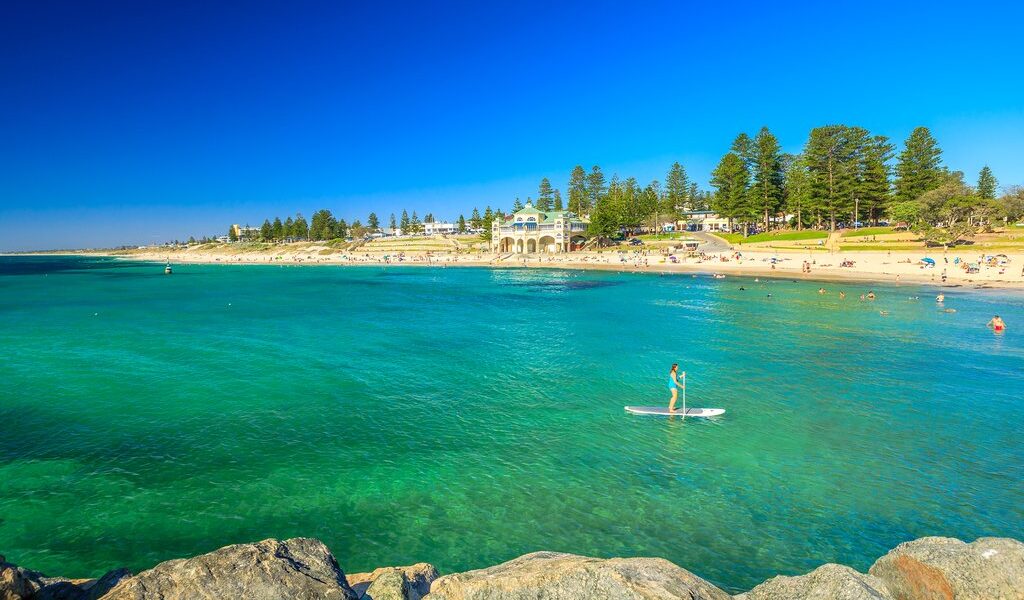
January is mid-summer in Australia, and that means throughout the country, temperatures range from pleasant to hot (and to scorching). Travelers seeking a sunny beach holiday won’t be short of options around the coast. Cities can be scorching, but they’re also air-conditioned; and for other outdoor adventures, Tasmania is a cooler option.
Australia in January: A Comprehensive Travel Guide
## Weather in January Across Australia
Australia, a continent of unparalleled beauty and diversity, experiences a wide range of climates, especially during the summer months. January in Australia falls squarely within the summer season, bringing with it warm or even hot conditions across much of the country. When planning your travels during this time, it is essential to understand the nuances of the Australian climate, which varies significantly from region to region.
Popular urban centers such as Sydney and Melbourne typically enjoy average high temperatures hovering around 78°F (25°C). However, these figures can be misleading as both cities are prone to experiencing heatwaves that can push temperatures well above 100°F (37°C). The coastal regions, in particular, tend to be more humid than their inland counterparts, which can make even moderately high temperatures feel intensely uncomfortable. It’s important to stay hydrated and seek shade during the hottest parts of the day when exploring these vibrant cities.
Venturing further south to cities like Adelaide, the summer heat can become even more intense. The inland regions of Victoria and South Australia have even been known to break heat records in the past, demonstrating the extremity of the summer weather in these areas. In stark contrast, the island state of Tasmania, located south of the mainland and separated by the Bass Strait, offers a welcome respite from the heat. While Tasmania does experience warm temperatures and is vulnerable to bush fires, it is significantly cooler compared to other parts of the country. Hobart, Tasmania’s capital city, has an average high temperature of 70°F (21°C) in January, making it an attractive destination for those seeking a more temperate summer experience.
For those brave enough to venture into the heart of the Australian outback, it’s crucial to be prepared for extreme heat. Inland towns frequently experience temperatures that far exceed those along the coast, with some of the earth’s highest recorded temperatures occurring here during the summer months. The opal mining town of Coober Pedy in South Australia is a prime example, where residents live in underground housing to escape the relentless heat. In January, temperatures in Coober Pedy regularly soar to 107°F (46°C), highlighting the necessity for specialized adaptations to survive in such conditions.
As you move further north, the climate gradually transitions from arid to tropical, bringing with it increased rainfall. While cities like Sydney and Melbourne can experience occasional rain during the summer, their wetter seasons typically occur in autumn and winter. However, in January, Darwin, Australia’s northernmost capital city, experiences heavy rainfall as it is right in the middle of the wet season. The same holds true for Northern Queensland, where frequent downpours are a common occurrence.
## Understanding Crowds and Costs in January
January is a popular time for both international and domestic travelers to visit Australia. For those escaping the winter chill of the Northern Hemisphere, Australia offers a warm and sunny escape. Adding to this influx of tourists is the fact that Australians also tend to take their summer vacations in January, particularly during the first half of the month, as the summer school holidays run from mid-December to late January.
As a result, popular destinations, especially beaches along the New South Wales coast, can become extremely crowded. Iconic beaches in Sydney, such as Bondi, Cronulla, and others, are known to attract large crowds during this peak season. However, it’s worth noting that not all beaches experience the same level of congestion, and it’s possible to find more secluded spots with a bit of research.
The high demand for travel during January also affects prices. Domestic airfares are often more expensive during this month, so it’s essential to book well in advance if you’re traveling on a budget. Similarly, accommodation options around the New Year period tend to fill up quickly, so it’s crucial to make reservations well ahead of your travel dates to secure the best deals.
## Recommendations for Where to Go in January
If you plan on traveling to Australia in January, it’s generally advisable to focus on the coastlines of New South Wales (including Sydney) and Victoria (including Melbourne), or to consider crossing the Bass Strait to explore Tasmania. While these areas can experience periods of very high temperatures, they also offer ample opportunities to escape the heat and enjoy a wide range of summer activities.
For those who are more adventurous and wish to venture into the northern regions of the country, it’s important to be aware of the presence of deadly box jellyfish in the sea. These dangerous creatures typically inhabit the waters of north Queensland and northern Western Australia from November to May, making swimming unsafe in many areas. Other, slightly less deadly, jellyfish species can also be present during this time.
## Activities and Things to Do in January
January is an ideal time to visit Australia if you’re a fan of water sports or simply enjoy relaxing on a beautiful beach. City beaches in Sydney (Bondi, Manly) and Melbourne (St. Kilda) are conveniently located close to urban amenities, offering easy access to big-city facilities while providing clean waters and sands. The extensive coastlines of New South Wales and Victoria also provide numerous options for those seeking more remote or small-town beach destinations.
Beyond the beaches, Australia also offers a diverse range of outdoor activities for nature enthusiasts. Hiking and sightseeing opportunities abound in the Blue Mountains west of Sydney, the highlands of inland New South Wales, and the Australian Capital Territory/Canberra. Even in urban areas like Canberra, it’s not uncommon to encounter native wildlife such as kangaroos lounging on the lawns of suburban houses. For experienced hikers seeking rugged, long-distance trekking experiences, Tasmania is an unbeatable destination. Nearly half of the island is protected as national park or reserve land, offering endless opportunities for exploration.
And, of course, Australia’s major cities boast a wealth of cultural attractions to explore in air-conditioned comfort. Museums, galleries, shops, restaurants, theme parks, zoos, and aquariums provide endless entertainment options for visitors of all ages.
## Special Events in January
Country Music Festival, Tamworth: Music enthusiasts should consider heading inland to rural New South Wales for the Country Music Festival in Tamworth, held annually in January.
Sydney Festival: The Sydney Festival is a major cultural event that offers a diverse program of arts, music, theater, dance, and other attractions throughout the early part of January.
Australia Day, nationwide: Australia Day, the country’s national holiday, is observed on January 26th, commemorating the arrival of the First Fleet at Sydney Cove in 1788. In recent years, this day has also become an opportunity for Indigenous Australians and their allies to raise awareness about the ongoing injustices and inequalities they face, leading to some referring to it as Invasion Day. Expect to see Invasion Day events and rallies in major cities such as Canberra, Melbourne, Sydney, and Brisbane.
This rewritten content provides a more descriptive and detailed account of traveling to Australia in January, exceeding the original word count.
B-113

